Working Life
The collection contains items related to working life in the Inverclyde area. It includes objects relating to shipbuilding, engineering, sugar, ropemaking, whaling, banking, seafaring, tailoring, electronics and computer manufacturing, retailing and land transport within Inverclyde. It was through this wide range of activities that Inverclyde was able to function as a social and economic unit and this collection records that contribution and the daily experience of those who worked in these industries.
The collection of objects relating to shipbuilding and ship repair is of enormous significance for the Inverclyde area, for these industries were not only of local importance, they had at various times, national and international significance. In many ways these industries were the forces that defined the Inverclyde area in the later nineteenth and early twentieth centuries, creating much of what is now perceived as local tradition and heritage.
Marine engineering was a major local industry for over 180 years and the major concerns in the area such as John G. Kincaid & Co., John Hastie & Co. Ltd. and others employed many thousands of Inverclyde people. The marine engineering industry contributed to the unique nature of the Inverclyde area in a variety ways and is of great importance to the understanding of local history today. The collection contains plans, instruments, objects and photographs relating to the industry.
The collection also contains items relating to the sugar processing industry in Inverclyde. They range from plans of refineries to objects used in the industry and photographs of the refineries. In the 250 years of its existence the sugar industry led Inverclyde to becoming involved in many aspects of British foreign policy from the age of slavery to the colonial produce protection schemes of the twentieth century.
The text and images on this page are the copyright of the McLean Museum and Art Gallery. For enquiries about this collection please contact us at wattinstitution@inverclyde.gov.uk.
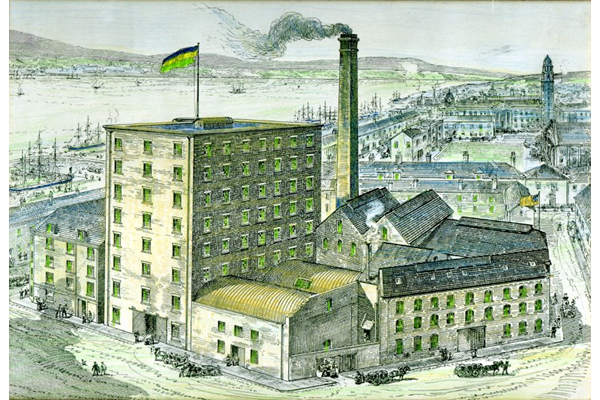
Brewer's Sugar Manufactory, Greenock
Colour lithograph print, dated 1887, showing Brewer's Sugar Manufactory, Greenock. - 2007.29 - © McLean Museum and Art Gallery, Greenock
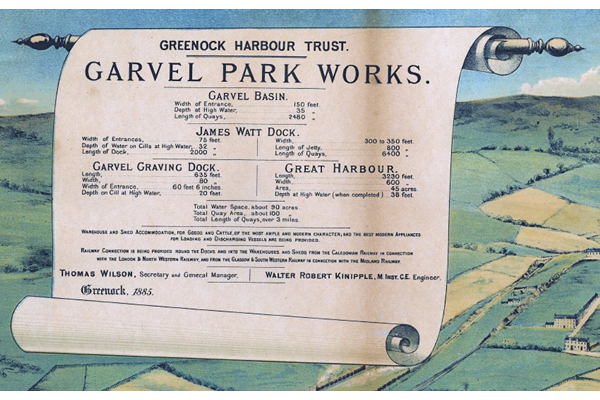
Aerial Map of the James Watt Dock 1885
Title cartouche from an aerial drawing showing the layout of the proposed James Watt Dock Works in 1885. - Colour lithograph on paper - 2012.63 - © McLean Museum and Art Gallery, Greenock
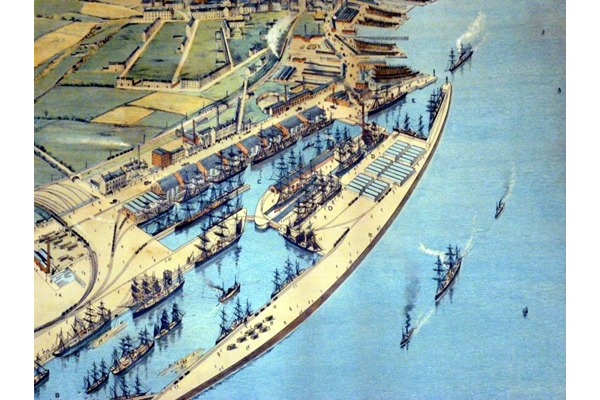
View of the James Watt Dock 1885
View of the proposed James Watt Dock from a coloured lithograph map of 1885. - 2012.63 - © McLean Museum and Art Gallery, Greenock
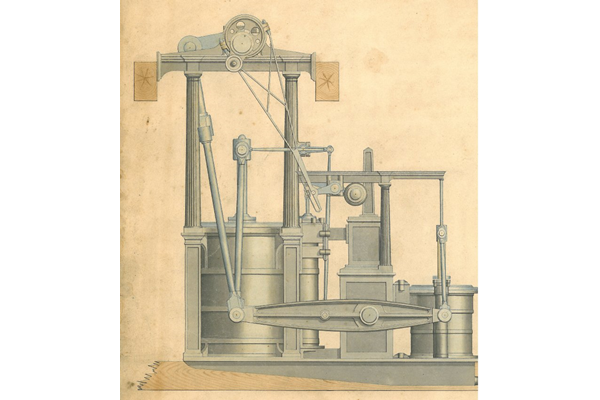
The engine of the steamer Liverpool 1830
Engineering drawing of the side lever steam engine of the Liverpool built by Robert Steele of Greenock with engines by Caird & Co., Greenock in 1830. - 2007.14 - © McLean Museum and Art Gallery, Greenock
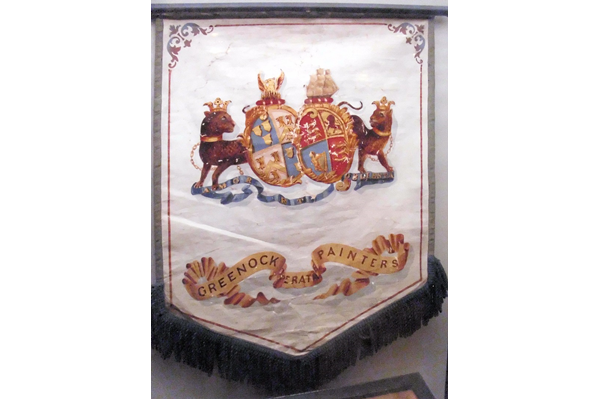
Banner of the Greenock Cooperative Painters Society
A painted textile banner of the Greenock Cooperative Painters Society, dated 1868. The society was founded in 1857. - 1981.1585 - © McLean Museum and Art Gallery, Greenock

Shipyard Time Clock
This early twentieth century time clock was made by National Time Recorder Company Ltd. and used in the Greenock shipyards for workers to 'Clock-in' and Clock-out'. - 1981.1625 - © McLean Museum and Art Gallery, Greenock
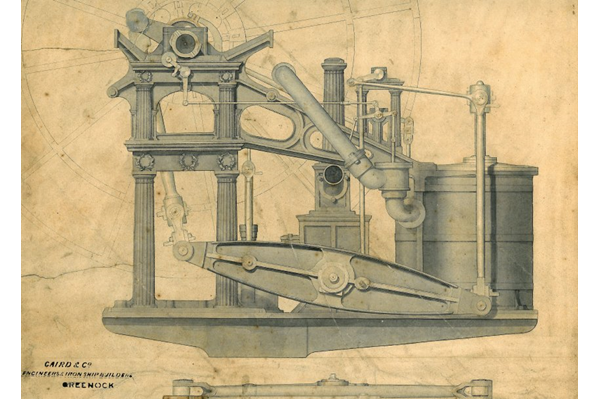
The engine of HMS Sphinx 1846
Engineering drawings of the side lever engine from HMS Sphinx built by Caird & Co., Greenock. HMS Sphinx was a wooden paddle sloop launched in 1846 and broken up in 1881. - 2007.15 - © McLean Museum and Art Gallery, Greenock
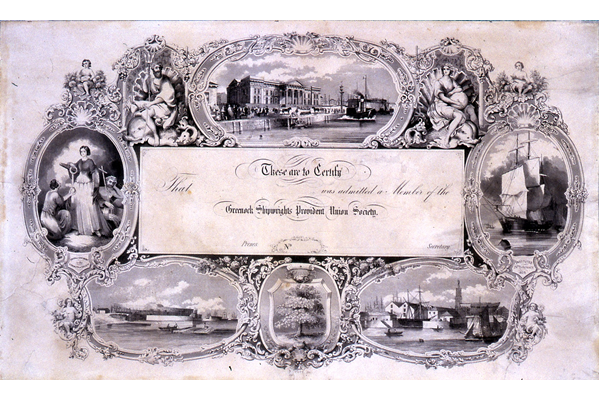
Certificate of Greenock Shipwrights' Provident Union Society
A blank membership certificate for Greenock Shipwrights' Provident Union Society, dated 1825. - 1978.218 - © McLean Museum and Art Gallery, Greenock

Shipyard Launch Control
Shipyard launch control from the Scott Lithgow shipyard. The mechanism has two buttons used to initiate the launch sequence on the shipyard slipway 1998.45 - © McLean Museum and Art Gallery, Greenock
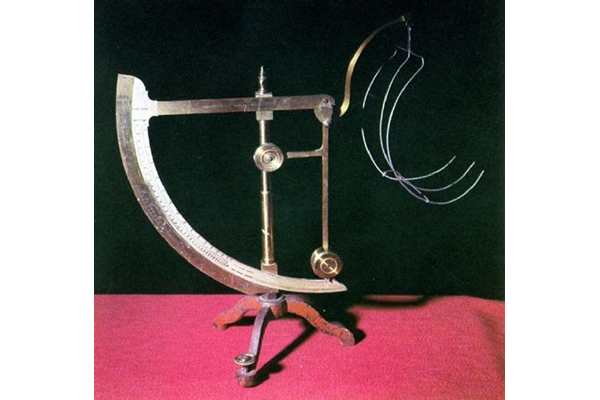
Yarn Balance
Yarn balance from the Gourock Ropeworks, Port Glasgow - 1978.340 - © McLean Museum and Art Gallery, Greenock
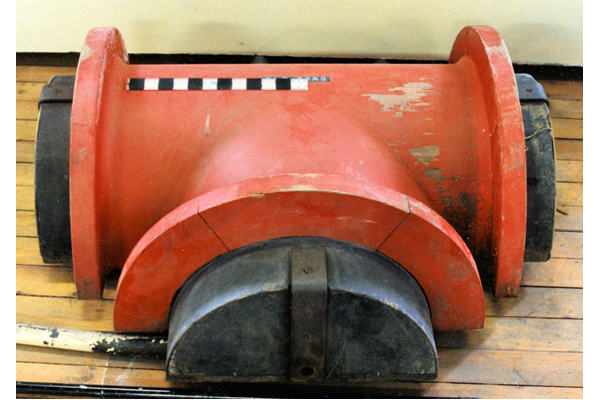
Pattern Mould
Pattern mould from the Engine Shop at Scott Lithgow Co. Ltd., Greenock, dating from the 1970s. - 2006.66 - © McLean Museum and Art Gallery, Greenock
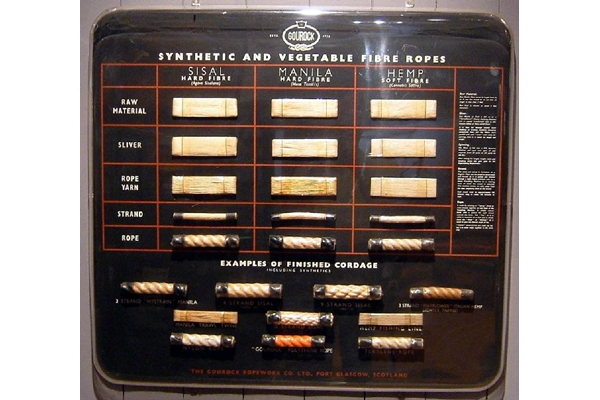
Display Panel from the Gourock Ropeworks
Display panel containing samples of the various synthetic and vegetable fibre products made by the Gourock Ropework Co. Ltd., Port Glasgow - 2006.372 - © McLean Museum and Art Gallery, Greenock
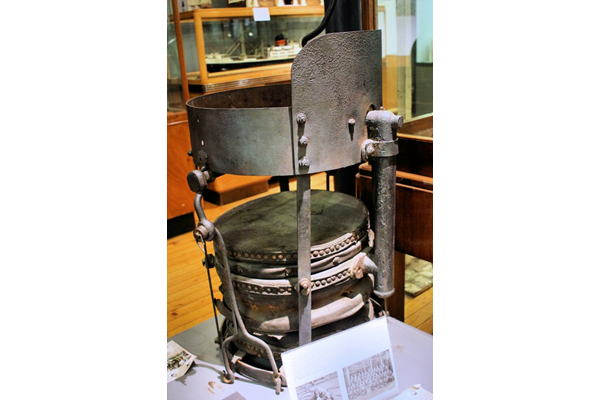
Rivet Pan
The pan was used to heat rivets in the Cartsburn yard of Scotts' Shipbuilding and Engineering Co. Ltd. The pan was attended by a boy, part of a team consisting of boy, a 'hodder on' who held the rivet in place and a riveter who used a hammer or a pneumatic gun. - 1978.675 - © McLean Museum and Art Gallery, Greenock
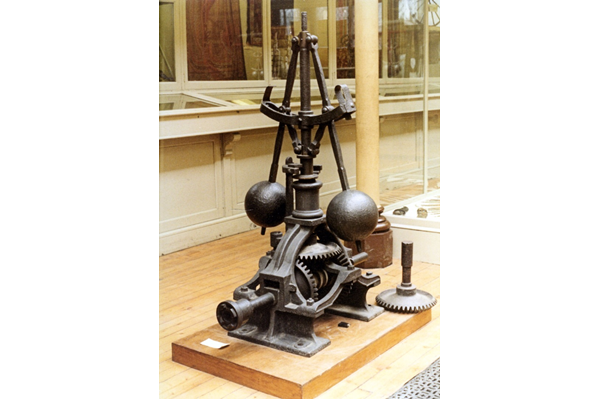
Water Wheel Governor
Governor of the Overshot water wheel erected at the works of the Shaw's Water Cotton Spinning Company, Greenock by James Smith of Deanston (1789-1850). - 2001.319 - © McLean Museum and Art Gallery, Greenock
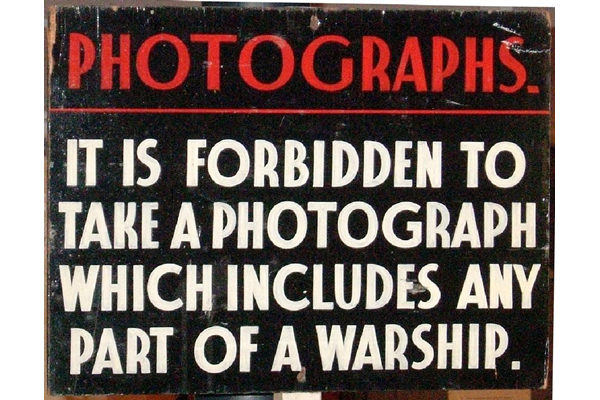
Shipyard Sign
Shipyard sign forbidding the photography of warships from Scotts' Shipbuilding and Engineering Co. Ltd., Greenock. - 2006.374 - © McLean Museum and Art Gallery, Greenock
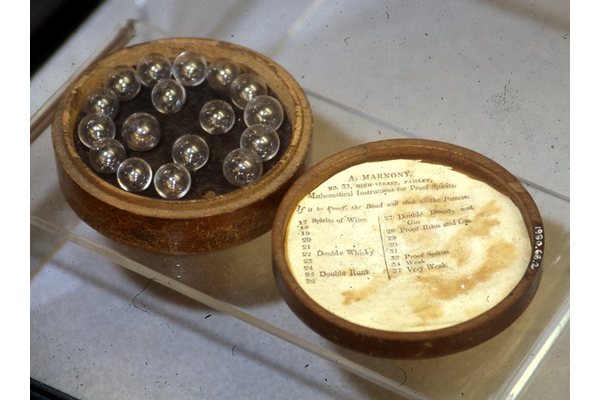
Hydrostatic Bubbles
Hydrostatical bubbles or 'philosophical bubbles' made of glass used to measure the alcoholic content of spirits by the Customs service and other businesses. - 1980.68 - © McLean Museum and Art Gallery, Greenock
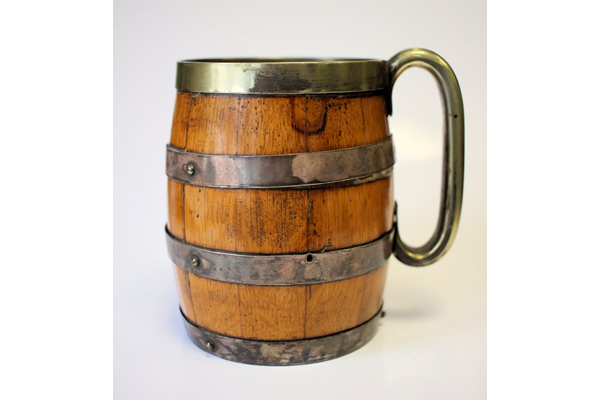
Ceremonial Tankard
The tankard was used when Loch Thom become the reservoir for the Greenock water supply, and took the first water out of it at the opening. The wooden part of the tankard was made by Drummond, a local cooperage firm. - 2015.13 - © McLean Museum and Art Gallery, Greenock
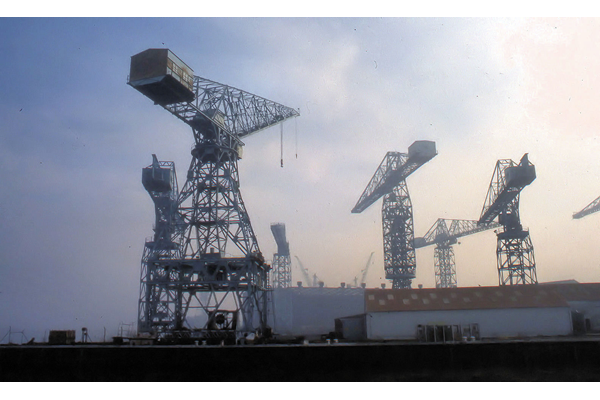
Cranes at Cartsburn Shipyard
Cranes at Cartburn Shipyard 1987 - Colour transparency by George A. Woods - 2005.8.35 - © McLean Museum and Art Gallery, Greenock
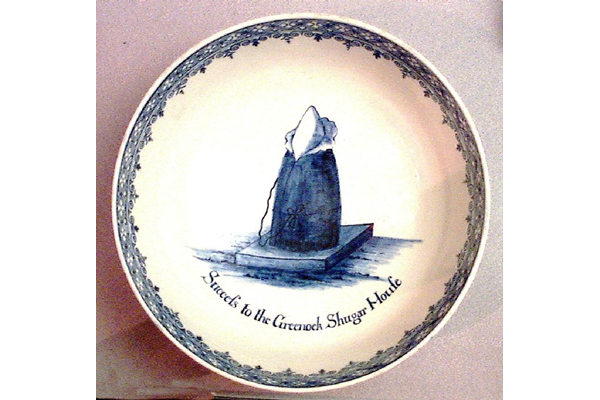
Punch Bowl
Porcelain punch bowl by Philip Christian of Liverpool inscribed 'Success to the Greenock Shugar House'. It probably refers to the opening of the sugarhouse in Sugarhouse Lane by Mark Kuhl in 1765. - 1999.101 - © McLean Museum and Art Gallery, Greenock
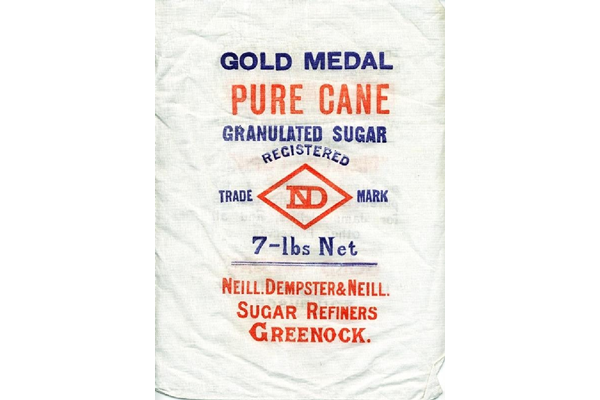
Sugar Sack
Textile sugar sack from the refinery of Neill, Dempster & Neill of Greenock Ltd. - 2006.235 - © McLean Museum and Art Gallery, Greenock
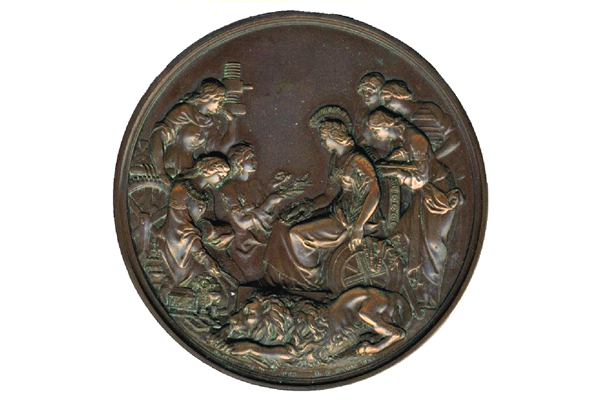
Prize Medal for Sugar
Copper trade exhibition medal designed by James Wyon (1804-1868) and awarded at the General Exhibition London in 1862 to Messrs. Anderson and Orr for the 'highest condition of refined sugar.' - 1978.645 - © McLean Museum and Art Gallery, Greenock




















